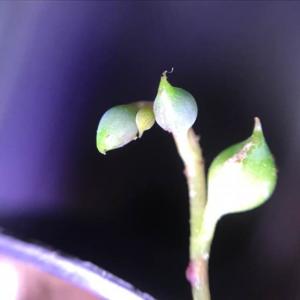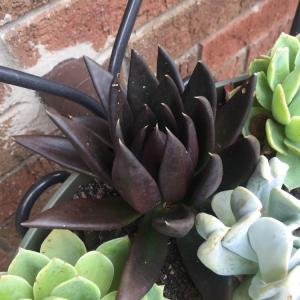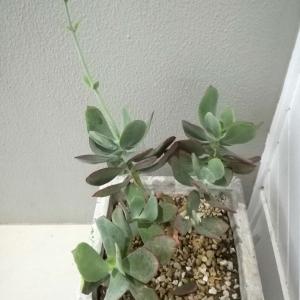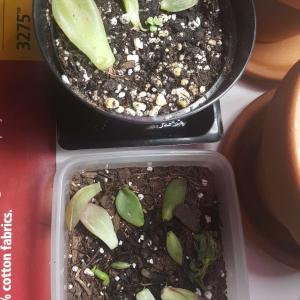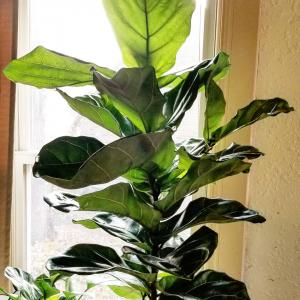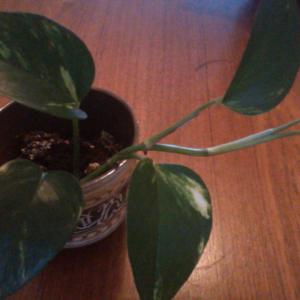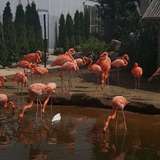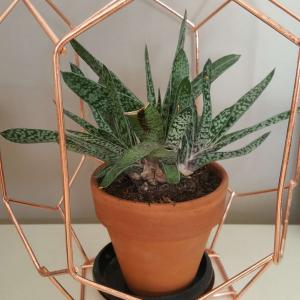成长记
Succulent wonderland
2017年11月15日

I now added "Crassula perforata (String of Buttons, Necklace Vine)" in my "garden"
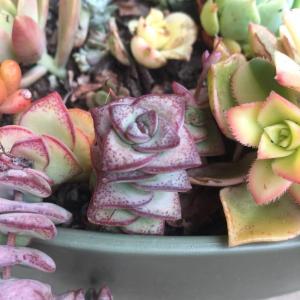

0
0
成长记
Succulent wonderland
2017年11月15日

I now added "Sedum rubrotinctum 'Jelly Bean Plant'" in my "garden"
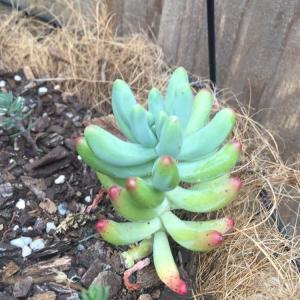

1
0
文章
Miss Chen
2017年11月14日

Strawberries (Fragaria × ananassa) are a tasty summer fruit that can be enjoyed fresh, frozen, or in favorite desserts. Whether grown in a traditional garden or in raised beds, hardy cultivars are capable of producing abundant crops when planted with proper care. Three varieties of strawberry plants are popular with gardeners across the United States.
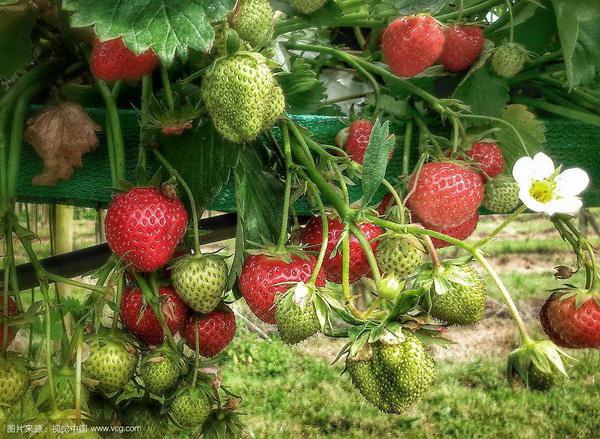
June-bearing Strawberries
June-bearing strawberry cultivars are the most popular among home and commercial growers because of the quantity and quality of the fruit. June-bearing plants produce a full crop the season after planting. Blooms and fruit appear from late May until the end of June.
Prior to planting, the garden soil requires attentive care in preparation for the second season of fruit-bearing. Gardeners may need to amend the soil to achieve a loamy condition. Organic matter, such as compost or animal manure, can help poor soil become loamy soil.
In addition, a 10-10-10 garden fertilizer broadcast in the spring of the planting year will boost yields the second season. David T. Handley, vegetable and small fruit specialist at the University of Maine Cooperative Extension, recommends having the soil tested for pH levels in conjunction with fertilizing. A soil pH level of 5.8 to 6.2 is optimal for strawberry plant growth and fruit production.
Once the soil is prepared, transplant June-bearing strawberry plants in the spring after hard frosts are over and the ground is dry. Plants do not tolerate wet conditions or the occurrences of repeated freezing and thawing.
Day-neutral Strawberries
Day-neutral strawberry plants produce a steady crop of fruit over the entire growing season. Although harvesting extends beyond June, total yield may fall short of fruit quantities produced by June-bearing plants. Day-neutral cultivars should be planted yearly as annuals.
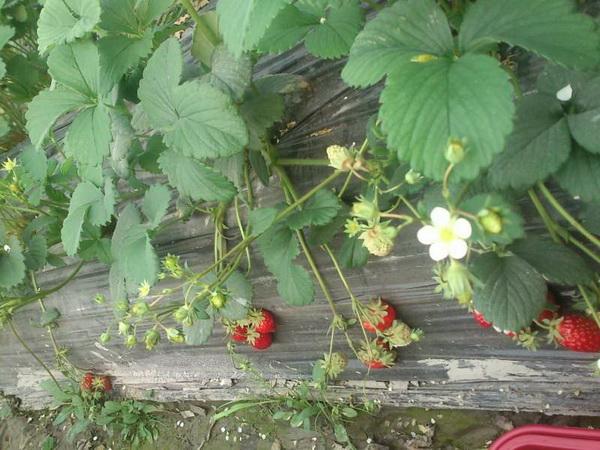
As with June-bearing cultivars, Day-neutral strawberry plants should be transplanted in early spring once the ground can be worked and the soil has dried from winter thawing. If purchasing, buy stock from a reputable local grower and plant in your garden immediately.
Follow soil preparation guidelines for June-bearing varieties, as soil requirements are similar. The University of Maine Extension also recommends choosing a garden plot offering six to 10 hours of sunlight per day. All strawberry plant varieties produce well when afforded enough full sun.
Everbearing Strawberries
Everbearing strawberry types differ from June-bearing and day-neutral plants because they produce small crops only in late spring and early fall. Everbearing is the oldest variety of strawberry plant and its popularity is waning. Many growers believe the June-bearing and day-neutral cultivars have superior-tasting fruit.
Consistent with June-bearing and day-neutral plants, everbearing strawberry plants require the same type of soil and plot location. Early spring, with drying soil conditions, is the optimal time for transplanting Everbearing strawberry plants.
Regional Considerations
Strawberry cultivars are available that are hardy in U. S. Department of Agriculture plant hardiness zones 2 to 11. As Floridata puts it, cultivars have been adapted for "all climatic zones where plants will grow."
Among the many varieties to choose from, a sampling of recommended types might begin, for areas with cold winter temperatures, with Junebearing "Northeaster" (Fragaria x ananassa "Northeaster," which is hardy in USDA zones 4-8) and "Sable" (Fragaria x ananassa "Sable," hardy in USDA zones 3 to 8). For Midwesterners, Ohio State University suggests day-neutral "Tribute" (Fragaria x ananassa "Tribute") and Junebearing "Earliglow" (Fragaria x ananassa "Earliglow"), both hardy in USDA zones 4 to 8, among others. Gardeners in the South will find success with "Cardinal" (Fragaria x ananassa "Cardinal"), hardy in USDA zones 5 to 9, while West Coast growers should consider "Sequoia" (Fragaria x ananassa "Sequoia"), a Junebearing variety hardy in USDA zones 6 to 9.
Purchasing stock from local growers ensures the plant selection offered is pre-screened and adaptable to your hardiness zone. With careful selection and proper care, gardeners in most states can enjoy juicy strawberries from their summer gardens.

June-bearing Strawberries
June-bearing strawberry cultivars are the most popular among home and commercial growers because of the quantity and quality of the fruit. June-bearing plants produce a full crop the season after planting. Blooms and fruit appear from late May until the end of June.
Prior to planting, the garden soil requires attentive care in preparation for the second season of fruit-bearing. Gardeners may need to amend the soil to achieve a loamy condition. Organic matter, such as compost or animal manure, can help poor soil become loamy soil.
In addition, a 10-10-10 garden fertilizer broadcast in the spring of the planting year will boost yields the second season. David T. Handley, vegetable and small fruit specialist at the University of Maine Cooperative Extension, recommends having the soil tested for pH levels in conjunction with fertilizing. A soil pH level of 5.8 to 6.2 is optimal for strawberry plant growth and fruit production.
Once the soil is prepared, transplant June-bearing strawberry plants in the spring after hard frosts are over and the ground is dry. Plants do not tolerate wet conditions or the occurrences of repeated freezing and thawing.
Day-neutral Strawberries
Day-neutral strawberry plants produce a steady crop of fruit over the entire growing season. Although harvesting extends beyond June, total yield may fall short of fruit quantities produced by June-bearing plants. Day-neutral cultivars should be planted yearly as annuals.

As with June-bearing cultivars, Day-neutral strawberry plants should be transplanted in early spring once the ground can be worked and the soil has dried from winter thawing. If purchasing, buy stock from a reputable local grower and plant in your garden immediately.
Follow soil preparation guidelines for June-bearing varieties, as soil requirements are similar. The University of Maine Extension also recommends choosing a garden plot offering six to 10 hours of sunlight per day. All strawberry plant varieties produce well when afforded enough full sun.
Everbearing Strawberries
Everbearing strawberry types differ from June-bearing and day-neutral plants because they produce small crops only in late spring and early fall. Everbearing is the oldest variety of strawberry plant and its popularity is waning. Many growers believe the June-bearing and day-neutral cultivars have superior-tasting fruit.
Consistent with June-bearing and day-neutral plants, everbearing strawberry plants require the same type of soil and plot location. Early spring, with drying soil conditions, is the optimal time for transplanting Everbearing strawberry plants.
Regional Considerations
Strawberry cultivars are available that are hardy in U. S. Department of Agriculture plant hardiness zones 2 to 11. As Floridata puts it, cultivars have been adapted for "all climatic zones where plants will grow."
Among the many varieties to choose from, a sampling of recommended types might begin, for areas with cold winter temperatures, with Junebearing "Northeaster" (Fragaria x ananassa "Northeaster," which is hardy in USDA zones 4-8) and "Sable" (Fragaria x ananassa "Sable," hardy in USDA zones 3 to 8). For Midwesterners, Ohio State University suggests day-neutral "Tribute" (Fragaria x ananassa "Tribute") and Junebearing "Earliglow" (Fragaria x ananassa "Earliglow"), both hardy in USDA zones 4 to 8, among others. Gardeners in the South will find success with "Cardinal" (Fragaria x ananassa "Cardinal"), hardy in USDA zones 5 to 9, while West Coast growers should consider "Sequoia" (Fragaria x ananassa "Sequoia"), a Junebearing variety hardy in USDA zones 6 to 9.
Purchasing stock from local growers ensures the plant selection offered is pre-screened and adaptable to your hardiness zone. With careful selection and proper care, gardeners in most states can enjoy juicy strawberries from their summer gardens.
0
0
文章
Miss Chen
2017年11月14日

Of the many varietals of strawberries in the botanical family Frageria, three kinds predominate for home garden and commercial production: June-bearers, everbearing and day-neutral. All three should be planted early in the spring to achieve the best fruiting performance.
Early Spring Planting

Strawberries should be planted outdoors as soon as the ground soil is soft and warm enough to dig up and easily till. In most climates this will be sometime in March or April. Earliest spring planting allows you to have as long a growing and fruiting season as possible and ensures that the strawberry plants' root systems are well developed before the heat of summer comes along.
Siting and Planting Technique

Select a planting location that receives a full sun exposure and has a rich, well-drained and weed free soil. Always plant strawberry plants when the soil is relatively dry, after rain or previous heavy irrigation has dried up. Cut away any diseased or damaged leaves before planting in the soil and soak the roots in tepid water for an hour or so if planting bare root strawberries.
Plant the strawberry plants up to the shoulder of its roots or root-ball level with the surrounding soil. Press soil around the roots being careful not to allow any soil to fall onto the crown or top of the plant between the stems. Plant strawberries on a cloudy day or during the late afternoon to limit the amount of sun and heat stress on the plant during the first 24 hours or so that it is acclimating to its new surroundings.
Mulching and Fertilizing

Strawberries benefit from being mulched over the plant tops in winter for cold and frost protection and around the base of the roots in spring and summer to prevent moisture loss and keep berries from contact with the soil. Straw works best for winter mulching and straw or shredded bark work well in spring and summer.
Strawberries can be fed with a light dose of water soluble fertilizer right after planting and watering in. Choose a good quality balanced crystal fertilizer like a 10-10-10 and mix 2 to 3 tbsp. with a gallon of water. Apply at least a cup of the solution to the roots of each plant, never pouring over the leaves.
Early Spring Planting

Strawberries should be planted outdoors as soon as the ground soil is soft and warm enough to dig up and easily till. In most climates this will be sometime in March or April. Earliest spring planting allows you to have as long a growing and fruiting season as possible and ensures that the strawberry plants' root systems are well developed before the heat of summer comes along.
Siting and Planting Technique

Select a planting location that receives a full sun exposure and has a rich, well-drained and weed free soil. Always plant strawberry plants when the soil is relatively dry, after rain or previous heavy irrigation has dried up. Cut away any diseased or damaged leaves before planting in the soil and soak the roots in tepid water for an hour or so if planting bare root strawberries.
Plant the strawberry plants up to the shoulder of its roots or root-ball level with the surrounding soil. Press soil around the roots being careful not to allow any soil to fall onto the crown or top of the plant between the stems. Plant strawberries on a cloudy day or during the late afternoon to limit the amount of sun and heat stress on the plant during the first 24 hours or so that it is acclimating to its new surroundings.
Mulching and Fertilizing

Strawberries benefit from being mulched over the plant tops in winter for cold and frost protection and around the base of the roots in spring and summer to prevent moisture loss and keep berries from contact with the soil. Straw works best for winter mulching and straw or shredded bark work well in spring and summer.
Strawberries can be fed with a light dose of water soluble fertilizer right after planting and watering in. Choose a good quality balanced crystal fertilizer like a 10-10-10 and mix 2 to 3 tbsp. with a gallon of water. Apply at least a cup of the solution to the roots of each plant, never pouring over the leaves.
0
0



